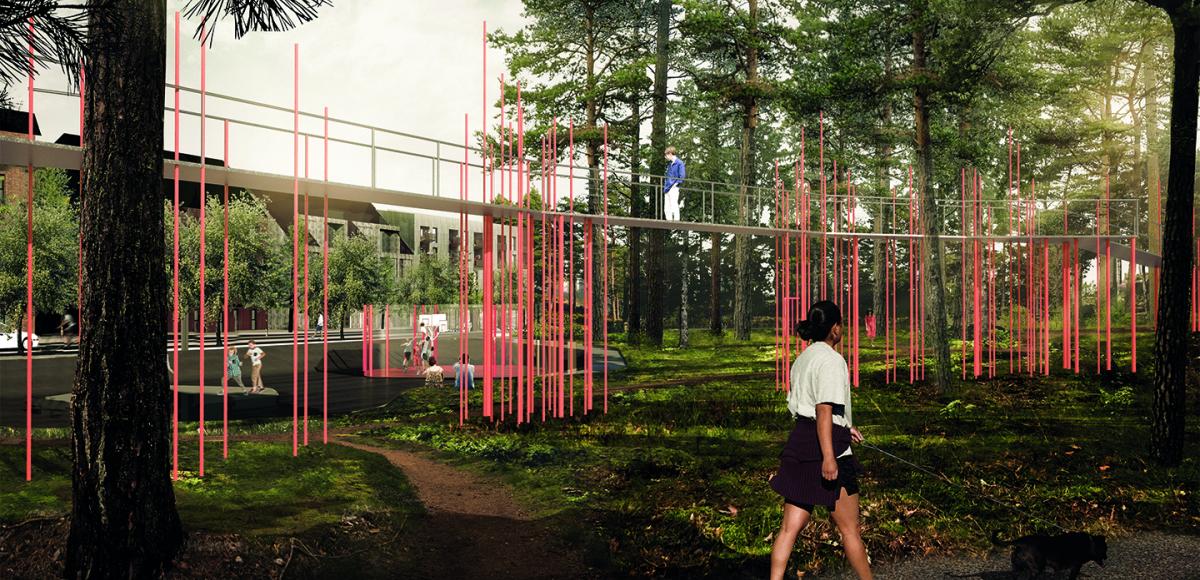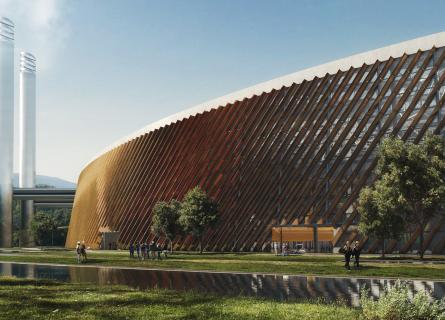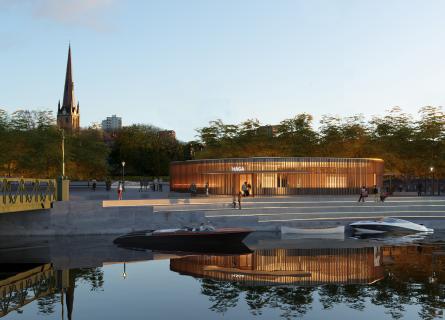
Sustainable way forward as Växjö grows
The way we design urban environments has a major impact on opportunities for humans and wildlife to thrive and grow. In the development of Bäckaslöv, Växjö’s new city district in Sweden, collaboration between experts from AFRY, the municipality, and the academic world has been central in shaping a streetscape that creates values which are sustainable in the long term – from several different perspectives.
Amidst the forests in the province of Småland in Sweden we find a constantly growing city: Växjö. The lakes surrounding the city centre limit its geographical expansion, but the former military area Bäckaslöv is an area where the city centre can spread out. This area will become a new city district of the same name, encompassing housing, schools, and commerce right next door to Växjö’s forests and meadows. Building a new city district from scratch presents new opportunities for more sustainable urban development, but simultaneously creates challenges when various perspectives are pulling in different directions.
Design focused on people
In the new Bäckaslöv district, housing, natural landscapes, and businesses will be linked by a 1,200-metre walkway forming the backbone of the area. The initial drawings included plans for a boulevard with a focus on creating a convenient car route through the district, but Ida Karlsson, Landscape Architect at Växjö Municipality, saw the need for a rethink.
“Quite early on I questioned the division of the large boulevard that was being planned – a classic design with cars on either side of a walkway with an alley of trees in the middle. I proposed focusing on people in the design rather than starting from the idea that cars should dominate,” she explains.

AFRY was brought in to work together with the municipality in configuring and developing the plans for the main street to create a place that takes better account of both people and the environment in the city.
By gathering more than 30 experts together with a variety of skill sets – landscape architects, civil engineers, lighting designers, geotechnical engineers, ecologists, and many more – AFRY has been able to include many important perspectives and design sustainable, cross-functional solutions. The result is very far from the original plan; the idea of a symmetric boulevard has been replaced by an asymmetric esplanade that prioritises the social areas in the streetscape.
“On one side of the esplanade, we have broadened the pavement and created a slow walkway with social areas and greenery, and on the other side a faster tempo with a roadway and a cycle path, where we have ensured good access,” explains Emilie Ireman, Assignment Manager at AFRY.
Process is key to solving complex sustainability issues
Bäckaslöv is unique in that the value of collaboration between several skill sets and stakeholders was understood early on. One clear example is how the work on creating space for nature in the city district occurred across various areas of expertise to create a pleasant environment, conserve key ecosystem services, and adapt the area to climate change, and possible future rising waterways and temperatures. Various species of trees have been selected in consultation with tree experts from the Swedish University of Agricultural Sciences to help increase biodiversity, and the planting of biochar in the plant beds produces nutrients for the trees and improves the soil’s capacity to absorb and store CO2. Green space in the district’s park was planned in such a way as to divert rainwater away from the esplanade thus utilising nature’s own capacity as a storm water reservoir.
“Our aim was to combine a climatefriendly streetscape and nature area with space for movement and play. For example, next to the district’s park we have created a type of sunken playground, which we call ‘urban play’, that can also impede water flows and prevent flooding during future heavy downpours,” explains Emma Ekdahl, Section Manager, Landscape & Urban Planning at AFRY.
The foremost challenge faced when sustainability is more clearly included in urban development is that each new aspect considered gives rise to new issues. Sustainable urban development is complex with no self-evident answers, and it has been a challenge to find a common way forward for all functional areas and stakeholders who have different aims. Both Emma Ekdahl and Emilie Ireman believe that the actual process is central to the final sustainability result.
“Knowledge-building is something you do together, not in isolation. It is extremely important to have a dialogue about the work if we are to succeed; that is very clear here,” Ekdahl says.
Ireman continues: “When we gather expertise and collaborate across various functional areas, we begin to understand how the whole system works; it’s not until then that we can find long-term solutions.”



